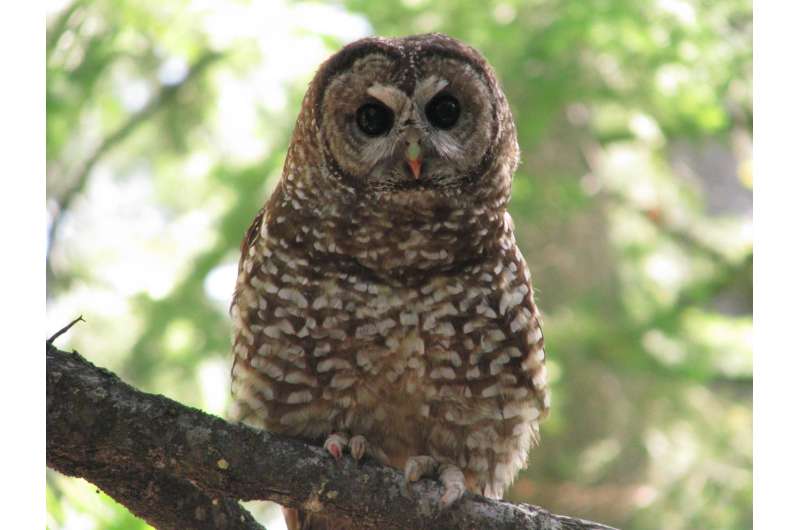Spotted owls benefit from forest fire mosaic

Fire is a crucial part of the forest ecosystem on which threatened Spotted Owls rely, but climate change and decades of fire suppression are changing the dynamics of these forests. A new study from The Condor: Ornithological Applications examines California Spotted Owl habitat use in Yosemite National Park and shows that while owls avoid the badly burned areas left behind by massive stand-replacing fires, they benefit from habitat that includes a mosaic of burned patches of different sizes and degrees of severity.
The National Park Service's Stephanie Eyes (formerly of Humboldt State University) and her colleagues wanted to know how Spotted Owl foraging patterns are influenced by fire severity and fire-created edges, with the goal of informing future fuels reduction efforts and prescribed burning programs. They used radio-transmitters to track movements of 13 owls on eight territories in Yosemite National Park between 2010 and 2012 and found that overall, owls foraged near their roosts and along the edges of patches of burned forest, preferring these edge habitats. Owls selected larger burned patches than the average available size but avoided the interiors of severely burned patches.
"Maintaining a complex mosaic of forest patches with smaller patches of high severity fire can help sustain California Spotted Owls in the greater landscape," says Eyes. "What's unique about our study is that we investigated fires that burned within the natural range of variation, so it paints a picture of how owls used a burned landscape before the onset of today's large stand-replacing fires." Despite the owls' preference for edges, there may be a threshold over which edges have a negative effect on habitat quality, and more research is needed to find the right balance between beneficial edge habitat and potentially harmful habitat fragmentation.
"This paper provides new radio telemetry data on how owls use home ranges that have had recent wildfires," according to the University of Minnesota's R.J. Gutiérrez, an expert on Spotted Owl habitat use. "Eyes and her colleagues provide a new piece of the puzzle about how owls respond, and they show that this response can be complex. More importantly, because their work occurred within a national park, it will serve as a 'natural control' that can be compared with other owl-fire studies occurring on managed forests."
More information: "California Spotted Owl (Strix occidentalis occidentalis) habitat use patterns in a burned landscape" The Condor: Ornithological Applications, americanornithologypubs.org/do … 1650/CONDOR-16-184.1
Provided by American Ornithological Society




















